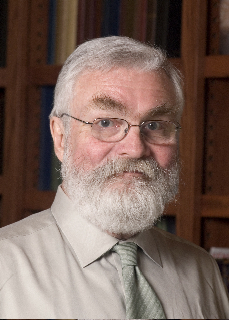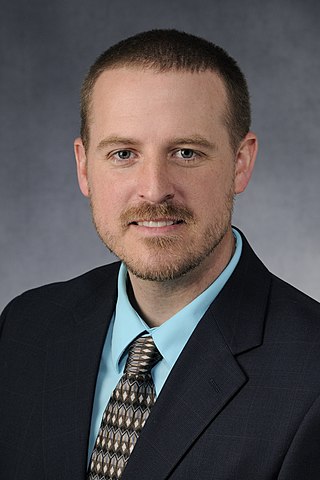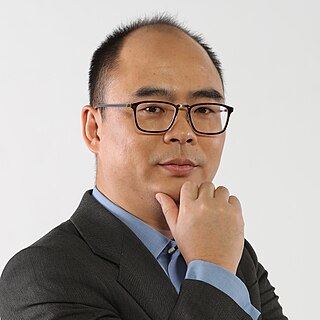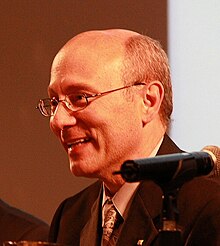
Thomas Shi-Tao Huang was a Chinese-born American computer scientist, electrical engineer, and writer. He was a researcher and professor emeritus at the University of Illinois at Urbana-Champaign (UIUC). Huang was one of the leading figures in computer vision, pattern recognition and human computer interaction.
Arun N. Netravali is an Indian–American computer engineer credited with contributions in digital technology including HDTV. He conducted research in digital compression, signal processing and other fields. Netravali was the ninth President of Bell Laboratories and has served as Lucent's Chief Technology Officer and Chief Network Architect. He received his undergraduate degree from IIT Bombay, India, and an M.S. and a Ph.D. from Rice University in Houston, Texas, all in electrical engineering. Several global universities, including the Ecole Polytechnique Federale in Lausanne, Switzerland, have honored him with honorary doctorates.
Gary Joseph Sullivan is an American electrical engineer who led the development of the AVC, HEVC, and VVC video coding standards and created the DirectX Video Acceleration (DXVA) API/DDI video decoding feature of the Microsoft Windows operating system. He is currently Director of Video Research and Standards at Dolby Laboratories and is the chair of ISO/IEC JTC 1/SC 29 and of the ITU-T Video Coding Experts Group (VCEG).
Toby Berger was an American information theorist.

Anastasios (Tas) Venetsanopoulos was a professor of electrical and computer engineering at Toronto Metropolitan University in Toronto, Ontario and a professor emeritus with the Edward S. Rogers Department of Electrical and Computer Engineering at the University of Toronto. In October 2006, Venetsanopoulos joined what was then Ryerson University and served as the founding vice-president of research and innovation. His portfolio included oversight of the university's international activities, research ethics, Office of Research Services, and Office of Innovation and Commercialization. He retired from that position in 2010, but remained a distinguished advisor to the role. Tas Venetsanopoulos continued to actively supervise his research group at the University of Toronto, and was a highly sought-after consultant throughout his career.

Robert M. Gray is an American information theorist, and the Alcatel-Lucent Professor of Electrical Engineering at Stanford University in Palo Alto, California. He is best known for his contributions to quantization and compression, particularly the development of vector quantization.
Heung-Yeung "Harry" Shum is a Chinese computer scientist. He was a doctoral student of Raj Reddy. He was the Executive Vice President of Artificial Intelligence & Research at Microsoft. He is known for his research on computer vision and computer graphics, and for the development of the search engine Bing.
Hélio Waldman is a Brazilian scientist best known for his work as rector of the Universidade Federal do ABC, UFABC (2010–2014) and as dean of research at the Universidade Estadual de Campinas, Unicamp (1986–1990). Currently working as a researcher and rector of UFABC.

Nasir Ahmed is an Indian-American electrical engineer and computer scientist. He is Professor Emeritus of Electrical and Computer Engineering at University of New Mexico (UNM). He is best known for inventing the discrete cosine transform (DCT) in the early 1970s. The DCT is the most widely used data compression transformation, the basis for most digital media standards and commonly used in digital signal processing. He also described the discrete sine transform (DST), which is related to the DCT.
Anthony George Constantinides FREng FIET is a professor of signal processing and the founder of the Communications and Signal Processing Group of the Department of Electrical and Electronic Engineering in Imperial College London. He has been actively involved with research in various aspects of digital filter design, digital signal processing, and communications for more than 40 years. Professor Constantinides' research spans a wide range of digital signal processing and communications, both from the theoretical as well as the practical points of view. His recent work has been directed toward the demanding problems arising in Financial signal processing and he now leads the Financial Signal Processing Lab in the EEE department of Imperial College London.
Chung-Chieh Jay Kuo is a Taiwanese electrical engineer and the director of the Multimedia Communications Lab as well as distinguished professor of electrical engineering and computer science at the University of Southern California. He is a specialist in multimedia signal processing, video coding, video quality assessment, machine learning and wireless communication.
The YCoCg color model, also known as the YCgCo color model, is the color space formed from a simple transformation of an associated RGB color space into a luma value and two chroma values called chrominance green (Cg) and chrominance orange (Co). It is supported in video and image compression designs such as H.264/MPEG-4 AVC, HEVC, VVC, JPEG XR, and Dirac. It is simple to compute, has good transform coding gain, and can be losslessly converted to and from RGB with fewer bits than are needed with other color models. A reversible scaled version with even lower bit depth, YCoCg-R, is also supported in most of these designs and is also used in Display Stream Compression. The more complete definition with variable bit depths of Y and chrominance values is given in ITU-T H.273.

Victor Bahl is an Indian Technical Fellow and CTO of Azure for Operators at Microsoft. He started networking research at Microsoft. He is known for his research contributions to white space radio data networks, radio signal-strength based indoor positioning systems, multi-radio wireless systems, wireless network virtualization, edge computing, and for bringing wireless links into the datacenter. He is also known for his leadership of the mobile computing community as the co-founder of the ACM Special Interest Group on Mobility of Systems, Users, Data, and Computing (SIGMOBILE). He is the founder of international conference on Mobile Systems, Applications, and Services Conference (MobiSys), and the founder of ACM Mobile Computing and Communications Review, a quarterly scientific journal that publishes peer-reviewed technical papers, opinion columns, and news stories related to wireless communications and mobility. Bahl has received important awards; delivered dozens of keynotes and plenary talks at conferences and workshops; delivered over six dozen distinguished seminars at universities; written over hundred papers with more than 65,000 citations and awarded over 100 US and international patents. He is a Fellow of the Association for Computing Machinery, IEEE, and American Association for the Advancement of Science.
Venkata Narayana Padmanabhan is a computer scientist and principal researcher at Microsoft Research India. He is known for his research in networked and mobile systems. He is an elected fellow of the Indian National Academy of Engineering, Institute of Electrical and Electronics Engineers and the Association for Computing Machinery. The Council of Scientific and Industrial Research, the apex agency of the Government of India for scientific research, awarded him the Shanti Swarup Bhatnagar Prize for Science and Technology, one of the highest Indian science awards for his contributions to Engineering Sciences in 2016.
V John Mathews is an Indian-American engineer and educator who is currently a Professor of Electrical Engineering and Computer Science (EECS) at the Oregon State University, United States.

Shannon D. Blunt is an American radar engineer and the Roy A. Roberts Distinguished Professor of Electrical Engineering & Computer Science at the University of Kansas (KU) in Lawrence, KS. He is Director of the KU Radar Systems & Remote Sensing Lab (RSL) and the Kansas Applied Research Lab (KARL).
Vivek K Goyal is an American engineering professor, author, and inventor. He is currently Professor of Electrical and Computer Engineering at Boston University (BU). He was named Fellow of the Institute of Electrical and Electronics Engineers (IEEE) in 2014 for contributions to information representations and their applications in acquisition, communication, and estimation. He was named OSA Fellow in the 2020 class for outstanding inventions in computational imaging and sensing, including unprecedented demonstrations of the utility of weak, mixed, and indirect optical measurements. He is also a member of the IEEE Information Theory Society.
Trac D. Tran received the B.S. and M.S. degrees from the Massachusetts Institute of Technology, Cambridge, in 1993 and 1994, respectively, and the PhD degree from the University of Wisconsin, Madison, in 1998, all in Electrical Engineering. In July 1998, Tran joined the Department of Electrical and Computer Engineering, Johns Hopkins University, Baltimore, MD, where he currently holds the rank of Professor. His research interests are in the field of digital signal processing, particularly in sparse representation, sparse recovery, sampling, multi-rate systems, filter banks, transforms, wavelets, and their applications in signal analysis, compression, processing, and communications. His pioneering research on integer-coefficient transforms and pre-/post-filtering operators has been adopted as critical components of Mozilla Daala, Microsoft Windows Media Video 9, and JPEG-XR.
Allen Gersho is a professor emeritus at UCSB who made significant contributions in the area of signal compression and speech coding.

Gang Hua is a Chinese-American computer scientist who specializes in the field of computer vision and pattern recognition. He is an IEEE Fellow, IAPR Fellow and ACM Distinguished Scientist. He is a key contributor to Microsoft's Facial Recognition technologies.







